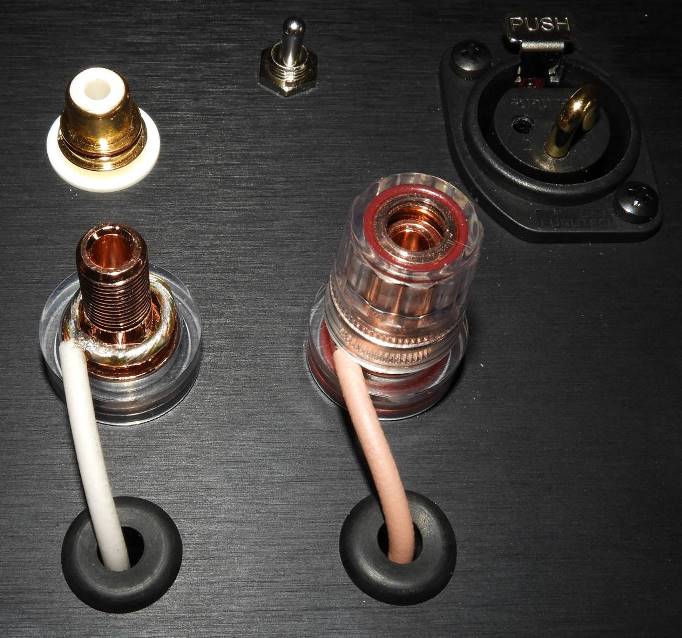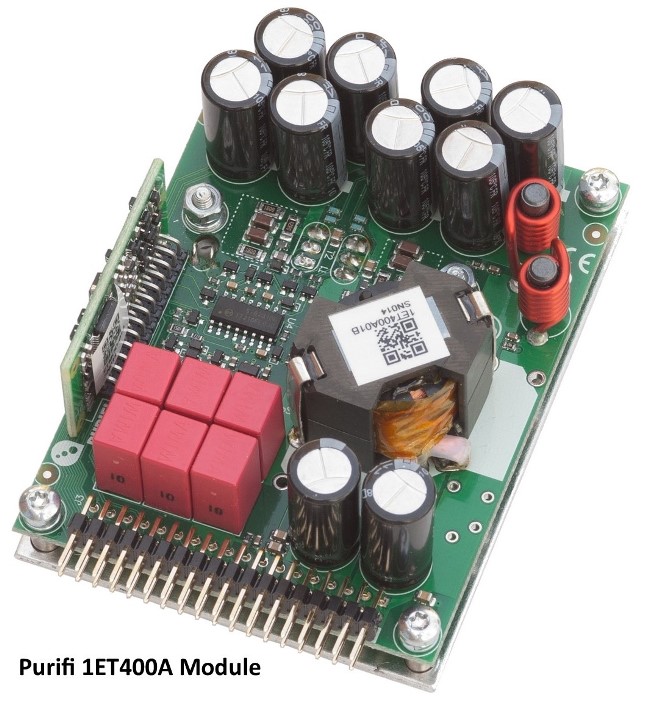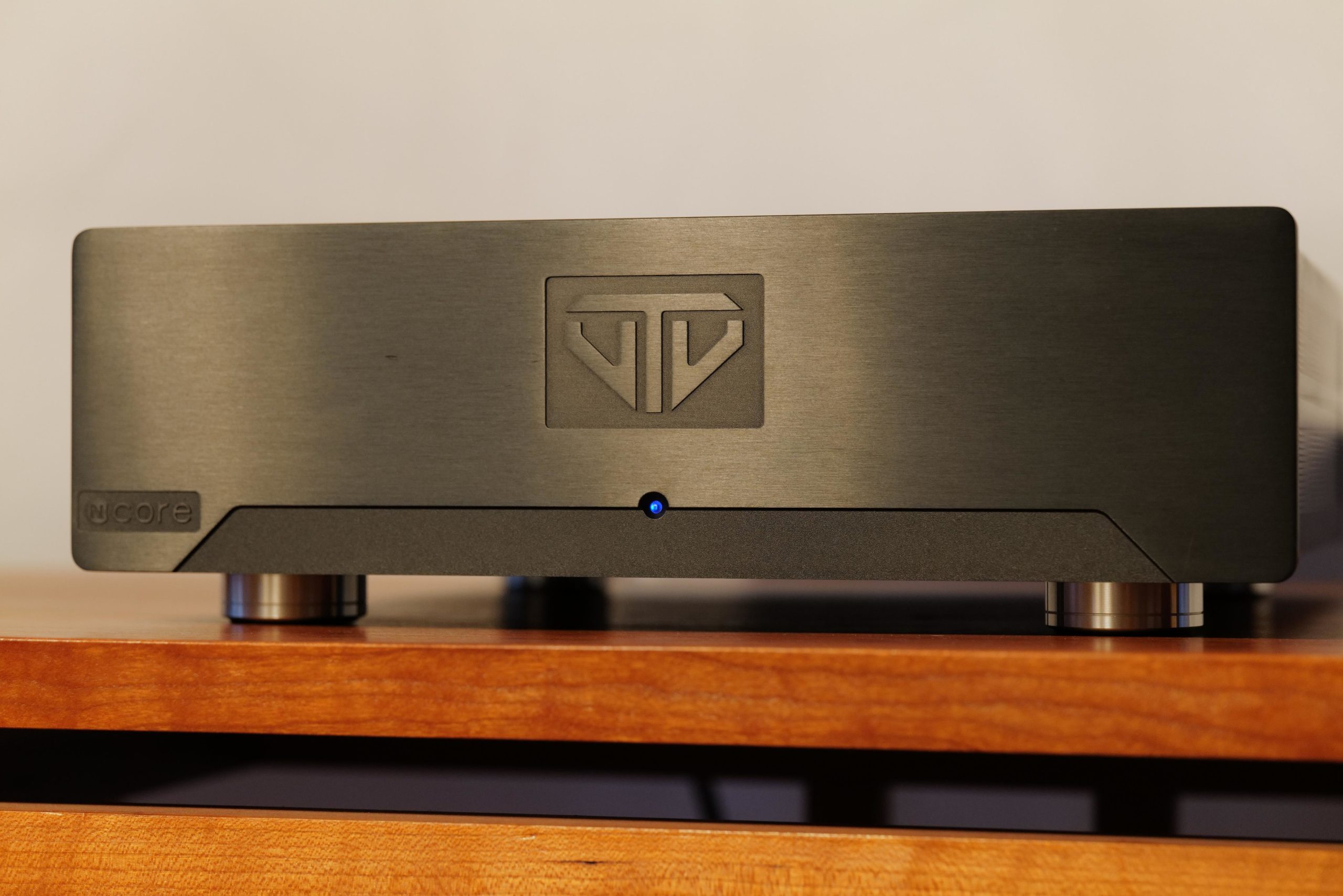“Surprise” is an understatement of my reaction to Electronic Visionary System’s request that I review their modification to a Purifi-based Class D amplifier after the less-than laudatory review of the NAD C298 power amplifier here on 10 Audio. The C298 also features the Purifi amplifier modules which, in that implementation, received a poor “6 LP” rating on these pages due to an obvious lack of low-level resolution. Could EVS’s mod address that serious problem? Let’s find out.
Ric Schultz, the proprietor of EVS, is a long-time modifier of many types of audio gear including other Class D amps with IcePower and Hypex modules. He is an adept listener as well as a talented tweaker. Ric’s earlier EVS 500 amplifier, based on IcePower modules, was reviewed on these pages in 2007. Please see the link below to his Web site, tweakaudio.com. The basic VTV amplifier sells for $1,039 and the modification package, included in the review sample, includes Mods 1-4 below and costs $650. This package includes:
Mod 1: “Purify” the AC input and connection to the switching power supply. Remove the stock steel shielded inlet/switch/AC filter combo and install a cryoed and demagnitized Furutech AC inlet. Elminate the power switch as it degrades the sound. The new AC inlet is connected with cryoed 14 gauge OFC wire insulated with foamed Teflon®, hardwired to the power supply (no connector). This mod is available separately for $150.
Mod 2: Upgrade the output filter on the Purifi module by removing the stock ferrite core inductor and installing a custom made high gauge OFC air core coil. Modify all 6 filter caps per channel and put them in the correct direction. The cost of this labor-intensive mod, available separately, is $300.
Mod 3: Binding Post Bypass System, invented by EVS in the late 1990s, replaces the stock binding posts with pure copper posts and uses 14 gauge cryoed Teflon® foam insulated wires, hardwired to the board. The binding post is being used as a clamp. A practical electrical connection for your speaker cables could not be any purer or more direct. The best binding post is no binding post. This mod is available separately for $200. (Actual image might be different depending on the base amp.)

The EVS modified VTV amplifier has a rated power output of 227 Watts per channel at 1% THD into 8 Ohms and a Signal-to-Noise Ratio of 131 dB. THD decreases to 0.00017% at 100 Watts. The entire amplifier weighs only 8 pounds 13.4 ounces. The brightness of the front blue LED can be set to off, dim or bright with a switch on the bottom of the enclosure, just behind the front panel. The amplifier runs a few degrees above ambient temperature, confirming that most of the electricity it consumes is sent to the loudspeakers and not wasted as heat. This will not be your winter-time room heater.
My main interest in auditioning the EVS modified VTV amplifier was to see if his mod improves on the performance of the $2,000 NAD C298 amp. The two amplifiers sound very different from each other, so you will be reading comparisons of these two amps, and also with a long-term reference $2,995 Benchmark AHB2 amp.
Due to scheduling issues, the amplifier was only available for about a week for this audition, and had little prior break-in time. Experience suggests that Class D amps can benefit from longer than usual break-in periods. Where we often use 100 hours of break-in as a guide, Class D products can reach full break-in at 300 or more hours of use. This assumes that you believe in the break-in phenomenon.
Other components on hand during the relatively short review period includes a Clearaudio Ovation turntable with Origin Live Agile tonearm; ZYX UNIverse Optimum and Miyajima Destiny moving coil cartridges; B.M.C. MCCI ULN phono preamplifier; custom Windows 10 music computer running JRiver Media Center; Marantz SA-10 SACD player/DAC, RME ADI-2 Pro AD/DA converter with external power supply; Soulution 325 with phono and Benchmark HPA-4 preamplifiers; Valvet E2 SE, NAD C298, Hegel H20, and Benchmark AHB2 power amplifiers; Magico S1 MkII loudspeakers, and Elac Vela loudspeakers borrowed from the HT system. The lowest few Hertz are engaged by a pair of JL Audio e110 subwoofers. The audio cabling is Audioquest WEL Signature and Mogami interconnects and speaker cables. USB cables are Straight Wire USB-F. Power protection and purification are provided by a PS Audio Dectet for the preamplifiers and source components, and a PS Audio Quintet for the power amplifiers. The Quintet includes a standard 1/8″ trigger connection for remote turn-on and -off of power amplifiers that lack a 12V remote trigger. Power cords include my DIY power cord, and Straight Wire Pro Thunder.
On the first day of listening to this newcomer, I was encouraged to listen to just one more song, and then one more, and one more, etc., well into the evening. With just a few hours of warm up, the EVS amp is not offensive and did not seem to be the weak link in a $90,000 system. The upper treble range is obviously less prominent or forward than the Benchmark, but after a few hours of listening, this difference became a non-issue. This is an ongoing caution for all component comparisons: a rushed judgement that more of some sonic attribute is automatically better is often in error. Every component has a unique character or presentation. Your job, should you decide to accept it, is to find the ideal balance of the best of these different characteristics. This is how you get “great”.
The bass and impactful upper bass seem to have more dynamics and power than the NAD. The bass is tuneful and consistent from the low bass up through the midrange. This range is the strength of the amp, while suffering far less in the upper frequencies than other Class D amps in this listener’s experience. The bass performance provides a solid foundation for all music.
On the Brothers Osborne LP, Port Saint Joe, “Slow the Roll” has a prominent bass line that attracts attention to the excellent bass. On other cuts, the persistent cymbal work is clear and very detailed. No softness here. There is no glare or harshness in the upper midrange or lower treble to exacerbate non-musical parts of recordings made with signal altering compression and other effects.
The soundstage is very good, with an excellent center image and pinpoint focus of all well-recorded singers. The depth of the stage is good to very good. The entire sound field is large and continuous in all 3 dimensions. Keith Urban’s “Coming Home”, on his Graffiti U disc, energizes the room with a very complete and enveloping sound field played at a moderate 80 dB SPL (104 dB peak). Keith’s proficiency on the bass guitar and banjo are evident throughout the album. Check out “Gemini”.
The EVS amp is just as competent in the treble as the Benchmark amp, but with a different perspective. The upper treble is a relatively less prominent than offered by the Benchmark, but more linear and much higher resolution than the NAD amp. If you are under the impression that the AHB2 sounds clinical or bright (it isn’t, really), the EVS amp presents that range less prominently but with similar resolution and nearly as much air. In fact, the low-level resolution in the upper treble is quite remarkable for a Class D amplifier, with none of the crossover distortion that can make some Class AB amplifiers tiring to listen to for hours on end. The Hegel H20 and Benchmark AHB2 differ from those amps because they utilize high-tech feed forward topologies.
This Purifi sound has been the goal of Class A amplifiers from the previous century to now, from such well-known names as Classe, Mark Levinson, Threshold, Krell, and others. A warm midrange with pure, harmonically-rich, distortion-free sound across the entire musical spectrum with deep, well controlled bass. For this listener, Class A is generally an improvement over good Class AB, but that push-pull sound is still present to some degree. If crossover distortion is present, your music will never soar. Like the Holy Grail of single-ended Class A sound, crossover distortion is absent in Class D.
The crispness and articulation of vocal sibilants is excellent, enabling easy clarity and understanding of vocals. These are very natural sounding, not “hot” or in-your-face. This also helps localization of performers on the sound stage, which are focused and encourages the ability to “look” directly at an artist. Similarly, stringed instruments have correct bite and control of every note.
In “Moon Over Bourbon Street” on Sting’s Dream of the Blue Turtles LP, Sting’s vocals are delivered with near-perfect transparency, helping the listener to get a good sense of the deep texture and character of his voice. On the same record, “Fortress Against Your Heart” offers realistic and natural sound. The impact of the drumstick is instantaneous but the modified amplifier is able to present a drumstick that is made of real wood.
On Sting’s Nothing Like the Sun LP, “Sooner or Later” presents very interesting percussion. The clarity and smooth upper treble, along with powerful dynamics, make listening to this album very satisfying and entertaining. This is impressive performance from any component, but especially noteworthy coming from one under $2,000.

All of the available digital music files, mostly 16 bit 44.1kHz WAV rips from CDs which are upsampled 4 times in JRiver to 32 bit 176.4kHz, are delivered beautifully by the Marantz SA-10. The Marantz SA-10 is a superb DAC. JRiver’s internal processing is at 64 bit. From my experiments ripping CDs and recording my LPs for personal use, upsampling by whole numbers sounds best. So 16 bit to 32 bit (2 times) and the 44.1kHz sampling rate upsampled 4 times to 176.4kHz is recommended. My own 32 bit 192kHz LP recordings are upsampled 2 times to 384kHz by JRiver. If you use a music computer of some sort, it probably has a 64 bit processor, so all of these bit rates are easily supported. Let your 64 bit machine keep the math simple with whole number processing!
The sound of the EVS modified AVA amplifier reminds me of the Cary CAD-805AE single-ended tube amp (211 output tubes, if you please), but has higher resolution in the lower bass. There is a welcome purity of tone and ease across the musical octaves.
This is a fine sounding amplifier. The rating below is offered on an amplifier with about 100 hours of break-in, and in a system which normally sounds perfectly balanced and compatible. I have no reservations suggesting that many listeners would award this amplifier their own “10 LP” ratings. In the review system, the EVS modified AVA amplifier often ventured into 10 LP territory. This is, so far, the best sounding Class D that this listener has heard.
Overall Rating: 9.5 LPs
Link to Electronic Visionary Systems

